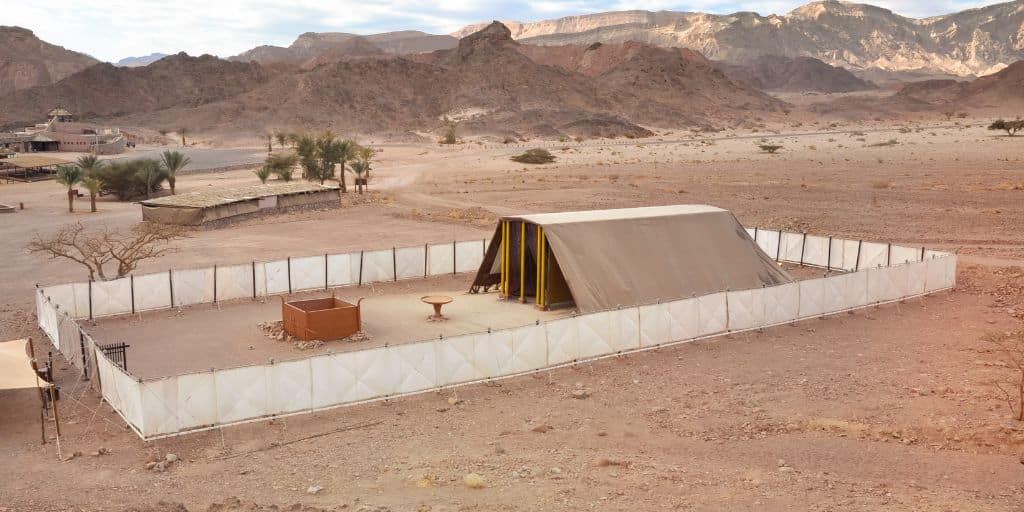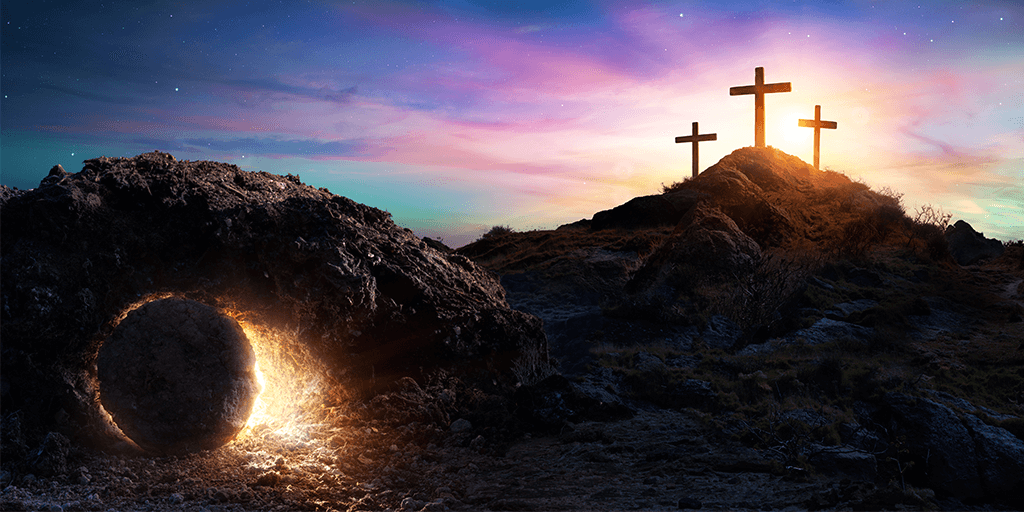The Torn Curtain

The death of Jesus Christ on the cross is a pivotal event in the Christian faith. One of the lesser-known but significant events that occurred at that moment was the tearing of the curtain in the temple. This event is described in the Gospel of Matthew, which states that at the moment Jesus gave up his spirit, the curtain of the temple was torn in two from top to bottom. This torn curtain has great symbolic significance and carries important theological implications for Christians. In this blog post, we will explore the meaning and significance of the torn curtain in the Bible and why it matters to the Christian faith.
“And when Jesus had cried out again in a loud voice, he gave up his spirit. At that moment the curtain of the temple was torn in two from top to bottom” (Matthew 27:50-51).
I suppose it would be relatively easy to ignore or overlook this statement about the tearing of the temple curtain, coming as it does on the heels of Jesus’ death. But this act—clearly performed by God—is a truly profound event.
To understand what’s going on here, we need to back up all the way to the Garden of Eden. Genesis 3:8 tells us that there was a time when God would come into that garden and actually walk and talk with Adam.
Of course, all that changed when Adam and Eve disobeyed God. Since God is “too pure to look on evil” (Habakkuk 1:13), He could, with some limited exceptions, no longer spend time with mankind. Moses provides us with two examples.
We know He met Moses at the “burning bush” (Exodus 3) although that was hardly a friendly chat. And even then, there was serious separation between them. Exodus 3:5-6:
“‘Do not come any closer,’ God said. ‘Take off your sandals, for the place where you are standing is holy ground.’ Then he said, ‘I am the God of your father, the God of Abraham, the God of Isaac and the God of Jacob.’ At this, Moses hid his face, because he was afraid to look at God.”
Again Moses encounters God at Mount Sinai when God entrusts him with the law that would govern His people. But even here access to God’s presence was very strictly controlled, or “fenced,” as my Presbyterian friends say. Here’s what God told Moses:
“And the Lord said to Moses, ‘Go to the people and consecrate them today and tomorrow. Have them wash their clothes and be ready by the third day, because on that day the Lord will come down on Mount Sinai in the sight of all the people. Put limits for the people around the mountain and tell them, “Be careful that you do not approach the mountain or touch the foot of it. Whoever touches the mountain is to be put to death. They are to be stoned or shot with arrows; not a hand is to be laid on them. No person or animal shall be permitted to live. Only when the ram’s horn sounds a long blast may they approach the mountain”’” (Exodus 18:10-13).
Now, mind you, this is just to be near the foot of the mountain where God met with Moses.
But, as we know, God actually longs to interact with His people, so on Mount Sinai He did two things. First, He gave Moses instructions for a tabernacle that would serve as the visible symbol of God’s presence. It traveled with the people, and as they wandered through the wilderness, every camp was set up around that tabernacle. This moveable tabernacle would later be replaced by a temple which was built and rebuilt several times through Israel’s history.
What’s important for us, though, is the part of that tabernacle/temple known as the Holy of Holies. This area contained the Ark of the Covenant. And it was in this area that we are told, “When Moses entered the tent of meeting to speak with the Lord, he heard the voice speaking to him from between the two cherubim above the atonement cover on the ark of the covenant law. In this way the Lord spoke to him” (Numbers 7:89).
According to the law God gave to Moses, only one Priest could enter the Holy of Holies, and only once a year (usually a priest would only have this opportunity once in his lifetime), and only after some pretty elaborate preparations. Otherwise, it was strictly off limits to everyone!
The entrance to the Holy of Holies was covered by a curtain that was huge. According to the historian Josephus, the curtain in the temple during Jesus’ time was probably about 60 feet tall, and about 4 inches thick. The book of Exodus describes this curtain as having four layers of cloth: blue, purple, and scarlet, with the final layer of fine linen. It’s probably safe to say that the imposing nature of this curtain was to reinforce the idea in the people’s minds that access to God was limited—very limited.
Sinful men were not to approach a holy God.
Now go back and read Matthew 27:50-51 again:
“And when Jesus had cried out again in a loud voice, he gave up his spirit. At that moment the curtain of the temple was torn in two from top to bottom” (Matthew 27:50-51, emphasis added).
The curtain was torn from top to bottom. Clearly this was not the action of any man. God did this. God tore open this barrier, exposing the Holy of Holies to everyone. Why? Because with Jesus’ death sin was conquered. Now, the writer of Hebrews tells us,
“Therefore, brothers and sisters, since we have confidence to enter the Most Holy Place by the blood of Jesus, by a new and living way opened for us through the curtain, that is, his body, and since we have a great priest over the house of God, let us draw near to God with a sincere heart and with the full assurance that faith brings, having our hearts sprinkled to cleanse us from a guilty conscience and having our bodies washed with pure water.” (Hebrews 10:19-22, emphasis added)
Be very clear here: The entrance into God’s presence is still very clearly fenced. Entrance is possible only through the blood of Jesus. Only as you recognize your need of a Savior, and place your trust in Jesus as your only Savior, do you have the right to come before your Heavenly Father.
On the other hand, no longer do you have to go through a priest or any other human agent. Jesus extends the invitation to you personally. Jesus stands ready to present you to His Father as a blood-bought child of God.
“To all who did receive him, to those who believed in his name, he gave the right to become children of God” (John 1:12)








One of my husbands frequent messages was the significance of the veil being rent from top to bottom. It is an important event.
Very informative! Thank you so much!